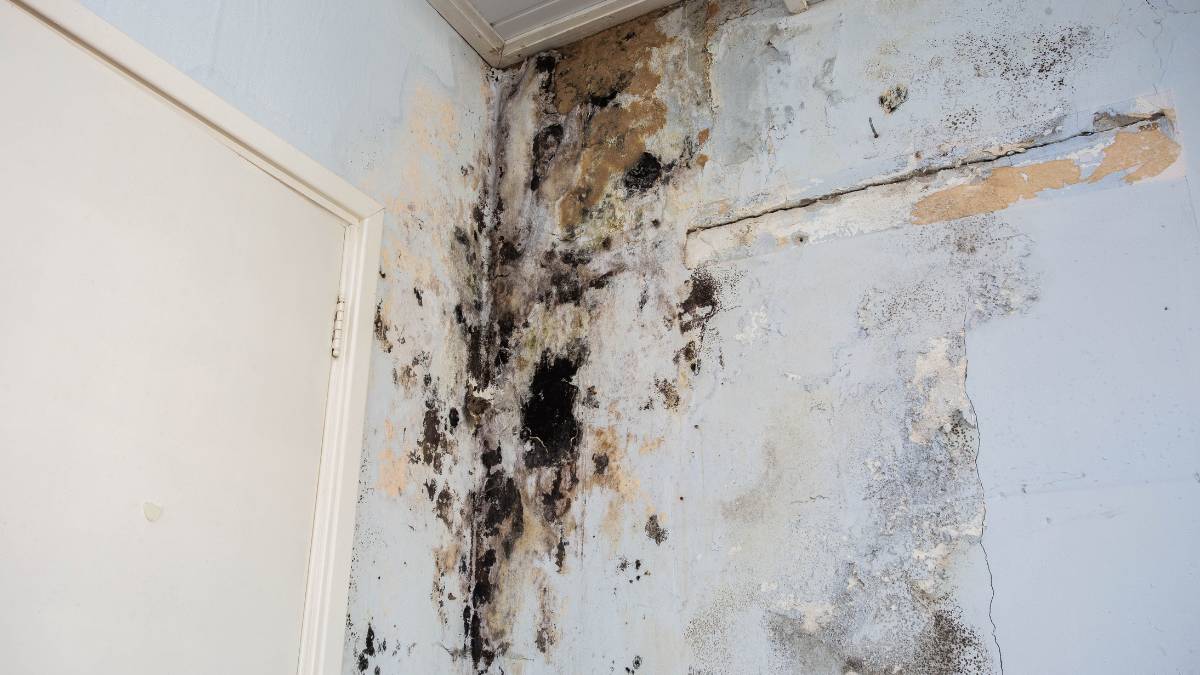Last Updated on January 25, 2024 by Kravelv
Water damage can be a frustrating and costly problem to deal with in your home. Whether it’s caused by a leaky roof, burst pipes, or natural disasters, water damage can wreak havoc on your property and belongings. However, you can take steps to prevent water damage from occurring and repair any damage that has already been done.
One of the first things you can do to prevent water damage is to regularly inspect your home for any signs of leaks or water damage. Look for water stains on walls and ceilings, warped or buckled flooring, and musty odors, as these can all be indicators of water damage. Additionally, make sure to maintain your plumbing and roof to prevent leaks from occurring.
If you do experience water damage in your home, it’s important to act quickly to minimize the damage and prevent further problems. Start by shutting off the water source and removing any standing water. Then, assess the damage and determine if you need to hire a professional to help with repairs. Depending on the severity of the damage, you may need to replace flooring, drywall, or even structural components of your home. By taking swift action and seeking professional help when needed, you can stop and repair water damage in your house.
Identifying Water Damage
Water damage can be a serious issue for homeowners, and it’s important to identify it as soon as possible to prevent further damage. In this section, we’ll discuss some common signs of water damage and how to locate the source of the problem.
Signs of Water Damage
There are several signs of water damage that you should look out for in your home. Here are a few of the most common:
- Water stains on walls or ceilings
- Bubbling or peeling paint or wallpaper
- Musty or damp odors
- Warped or sagging floors
- Mold or mildew growth
If you notice any of these signs, it’s important to take action right away. Ignoring water damage can lead to more serious problems down the line, including structural damage and health issues.
Locating the Source
Once you’ve identified that you have water damage, the next step is to locate the source of the problem. This can be tricky, as water can travel a long way from its source before becoming visible. Here are a few tips to help you locate the source of the water damage:
- Check for leaks in your plumbing, including under sinks and around toilets.
- Inspect your roof for any damage or missing shingles.
- Look for cracks in your foundation or walls.
- Check your gutters and downspouts for any blockages.
If you’re unable to locate the source of the water damage on your own, it may be time to call in a professional. A water damage restoration company can use specialized equipment to pinpoint the source of the problem and help you get your home back to its pre-damaged state.
Stopping the Water Flow
Water damage can cause a lot of problems in your home, and it’s important to stop the water flow as soon as possible. Here are some steps you can take to stop the water flow and prevent further damage.
Shutting Off the Water
The first step to stop water damage is to shut off the water supply. You can do this by locating the main water shut-off valve in your home. This valve is usually located near the water meter or where the main water line enters your home. Once you find the valve, turn it clockwise to shut off the water supply.
If you can’t find the main shut-off valve, you can shut off the water supply to individual fixtures or appliances. For example, if you have a leaky faucet, you can shut off the water supply to that faucet by turning the valve under the sink.
Emergency Repairs
If you can’t shut off the water supply or the damage is severe, you may need to make emergency repairs to stop the water flow. Here are some tips for emergency repairs:
- Use a bucket or other container to catch the water.
- Use towels or rags to soak up the water and prevent it from spreading.
- Use duct tape or a similar waterproof tape to cover the leak or hole.
- If the leak is coming from a pipe, use a pipe clamp or rubber sleeve to temporarily seal the leak.
Remember, emergency repairs are only temporary fixes. You’ll need to make permanent repairs as soon as possible to prevent further damage.
Water Damage Cleanup
Dealing with water damage in your house can be a daunting task, but with the right approach, you can minimize the damage and restore your home to its former glory. Here are some steps you can take to clean up water damage in your house:
Drying Out the Area
The first thing you need to do is to dry out the affected area. If the water damage is caused by a burst pipe or a leak, turn off the water supply to prevent further damage. Open up all the windows and doors to increase ventilation and allow fresh air to circulate. If you have a dehumidifier, plug it in to help remove excess moisture from the air. You can also use fans to speed up the drying process.
Removing Damaged Materials
Once the area is dry, you can start removing damaged materials. This includes carpets, furniture, and other items that have been soaked in water. If the water damage is extensive, you may need to hire a professional to help you remove and dispose of the damaged materials safely. Be sure to wear gloves and other protective gear when handling wet items, as they can be heavy and difficult to maneuver.
It’s important to note that not all materials can be salvaged after water damage. For example, if your drywall has been soaked in water for an extended period, it may need to be replaced. Similarly, if your carpet has been soaked in dirty water, it may need to be discarded.
In conclusion, cleaning up water damage in your house can be a challenging task, but with the right approach, you can minimize the damage and restore your home to its former glory. Remember to dry out the affected area and remove damaged materials as soon as possible to prevent further damage.
Preventing Future Water Damage
Regular Maintenance Tips
To prevent water damage in your home, you should perform regular maintenance on your plumbing and appliances. Check for leaks and repair them immediately. Inspect your gutters and downspouts regularly and clean them out to prevent blockages. Make sure your sump pump is working correctly and has a backup power source in case of a power outage.
You should also keep an eye on your water bill. A sudden increase in your water bill could indicate a leak somewhere in your plumbing that needs to be fixed.
Water-Resistant Materials
Using water-resistant materials in your home can help prevent water damage. Consider installing water-resistant flooring in areas that are prone to water damage, such as your basement or bathroom. You can also use water-resistant drywall and paint in these areas.
If you live in an area that is prone to flooding, consider using flood-resistant materials for your walls and foundation. These materials are designed to withstand exposure to water and can help prevent water damage in the event of a flood.
Remember, prevention is key when it comes to water damage. By performing regular maintenance and using water-resistant materials, you can help protect your home from costly water damage and keep your family safe and dry.
Frequently Asked Questions
Who should I contact if I discover water damage inside my walls?
If you discover water damage inside your walls, you should contact a professional water damage restoration company. They have the expertise and equipment to locate and repair the source of the water damage, as well as to dry and restore your home.
What’s the typical timeline for restoring a home after water damage?
The timeline for restoring a home after water damage depends on the extent of the damage. In general, the drying process can take anywhere from a few days to a few weeks. The restoration process can take several weeks to several months, depending on the severity of the damage and the scope of the repairs.
Can you walk me through the standard water damage restoration process?
The standard water damage restoration process typically involves the following steps:
- Inspection and assessment of the damage
- Water extraction and removal of damaged materials
- Drying and dehumidification of the affected area
- Cleaning and sanitizing of the area
- Restoration and repairs to the damaged area
How can I tell if there’s water damage hidden beneath my floors?
Signs of water damage hidden beneath your floors can include warped or buckled flooring, a musty odor, or discoloration of the flooring or walls. If you suspect water damage beneath your floors, it’s important to contact a professional water damage restoration company to assess the damage and make any necessary repairs.
Is it possible to completely repair water damage in a home?
While it is possible to repair water damage in a home completely, the extent of the repairs will depend on the severity of the damage. In some cases, replacing damaged materials or rebuilding portions of the home may be necessary.
What are the main reasons homes experience water damage?
The main reasons homes experience water damage include:
- Plumbing leaks or failures
- Roof leaks or failures
- Flooding from natural disasters
- Appliance malfunctions
- Poor drainage or grading around the home
Taking preventative measures, such as regular maintenance and inspections, can help reduce the risk of water damage in your home.
Author Bio:
Howard Griner is a General Contractor with a Bachelor’s in Building Science from the University of Southern California. He specializes in large-scale renovations to fine-tuning the details of home repairs. His hands-on experience allows him to provide practical, real-world solutions to homeowners’ everyday problems.


